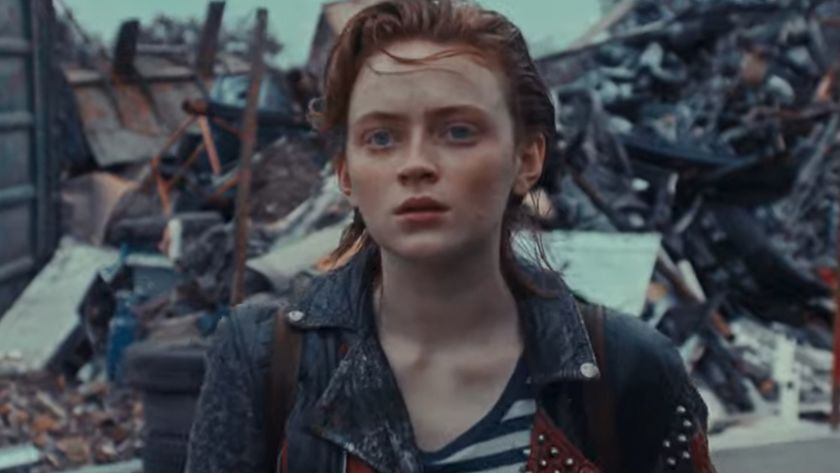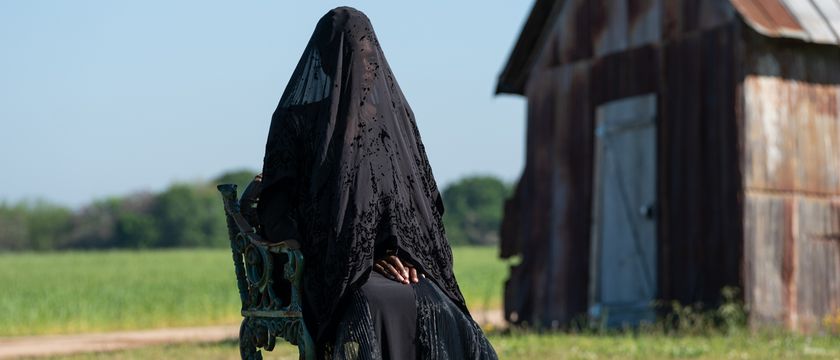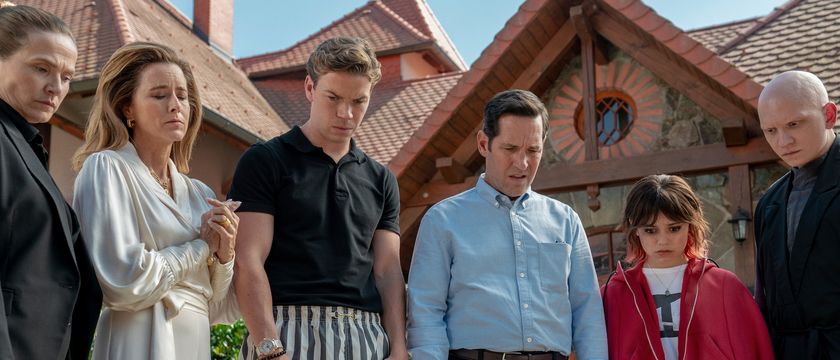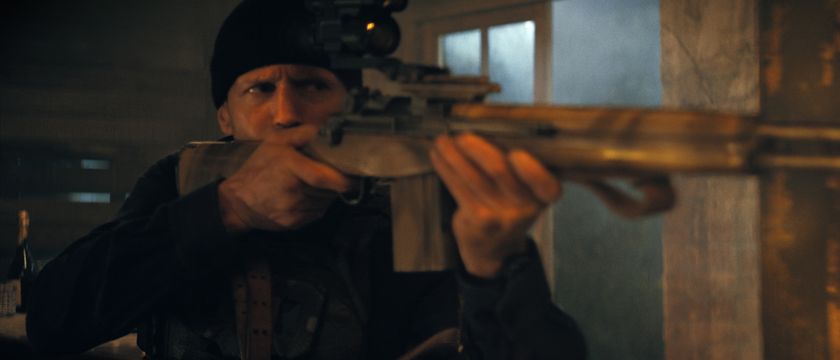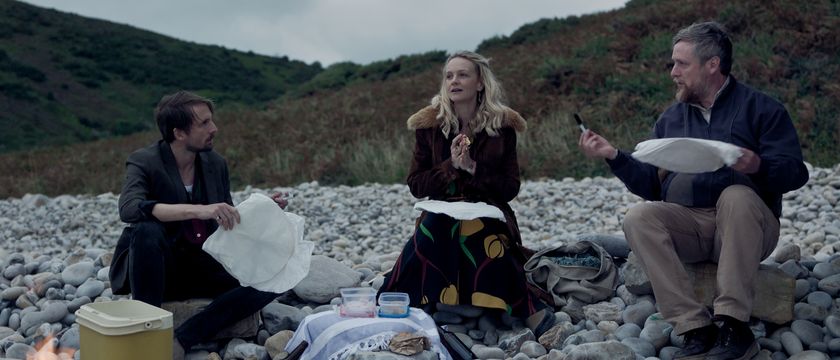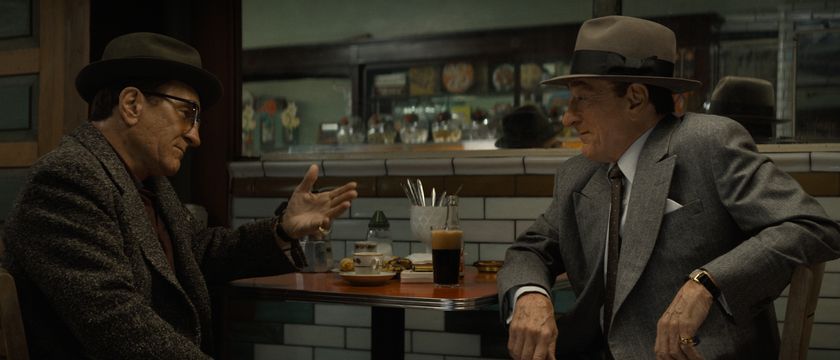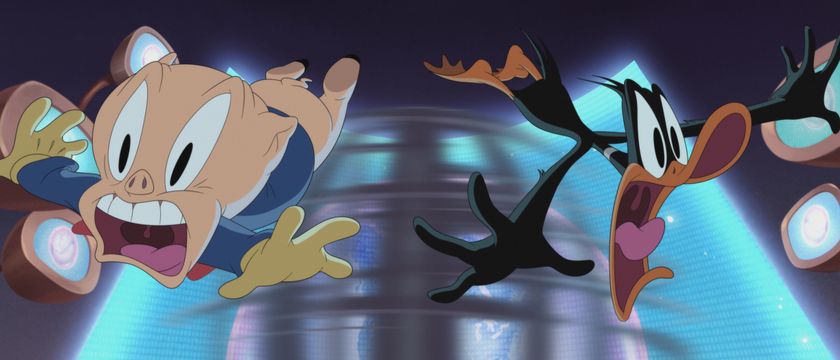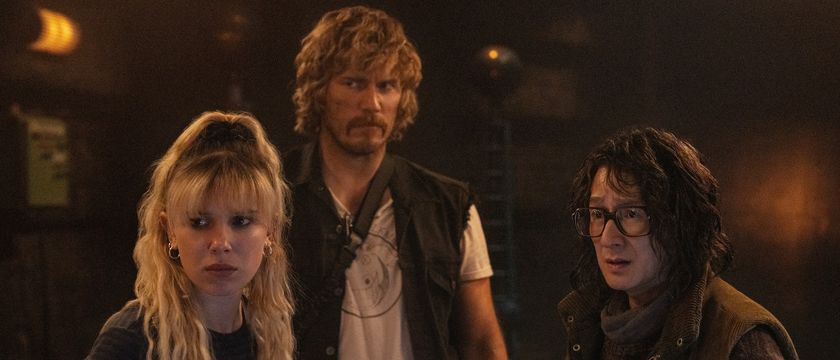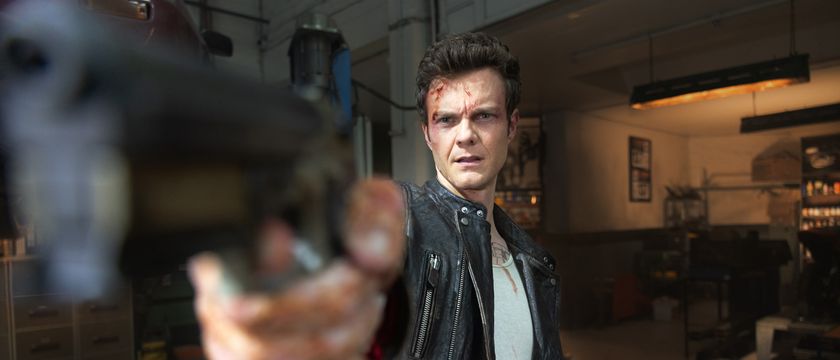Though a celebrated director, Barry Levinson has helmed as many misses as hits. So, it was difficult to know what to expect from his latest effort The Bay, which marks his first return to the horror genre since 1998's flop Sphere. Set on the Fourth of July, unfolding a story of terror come from the sea and centered on a plucky aspiring TV reporter, The Bay pulls inspiration from such highly regarded horror as Jaws and [REC], but its ecological monster and lack of momentum ultimately make it far closer to M. Night Shyamalan's reviled and thrill-free thriller The Happening.
At the Comic Con panel for The Bay, Levinson told the room of horror fans that the inspiration for the film came mostly from troubling true facts about the Chesapeake Bay, which is 40% dead. He considered making a documentary, but decided a narrative feature based on facts then bedazzled by some flashier horror elements might better deliver his environmentalism message. Unfortunately, amid all the dangling strands of half-formed stories and ill-defined characters, it's nearly impossible to make much sense of what is real and what is scare tactics, much less what Levinson is trying to say.
The film is set in a close-knit Maryland community happily celebrating Independence Day until their friends and neighbors begin breaking out in ghastly boils. Panic spreads almost as fast as this mysterious flesh-eating plague that the Center for Disease Control and the local hospital scramble to make sense of, as townspeople drop dead covered in boils, bites and blood. To capture the widespread nature of this outbreak, Levinson opted for a found footage device that folds in video shot from various web cams, security footage, cell phone cameras, and the news roll of the aforementioned reporter to pull together what happened that day. Donna Thompson (Kether Donohue) is an intern at the local news station who is given her big break documenting the city's annual festival, but after death and dread descend, she is forced to become a whistleblower since—she reflects via Skype—the government has hushed up the community's survivors with a hefty bribe.
While the premise seemed promising, The Bay has a lot of problems. Meant to capture the new age of media where people can easily upload video online moments after shooting it, the film set in 2009 feels awkwardly dated with barely a mention of Facebook or Twitter. Worse yet, rather than establishing a close-knit community with visuals and scene work, Levinson and screenwriter Michael Wallach lazily fill in the gaps by having Donna narrate who everyone is and how they know each other. This gives some context, but no sense of character to the bevy of roles that are thinly sketched and mostly amateurishly performed by a cast of unknowns. Much of the dialogue sounds like the worst of beginner's improv, with the performers awkwardly attempting casual conversation or Donna's feeble attempts to inject emotion into lackluster footage, like this: "Every time I watch these FaceTime videos, it just makes me feel sad." Because if you can't act an emotion, by all means, just tell us what it is.
While the lack of character development and clunky dialogue is seriously damning to the narrative's impact, the biggest issue is that Levinson doesn't seem to understand the horror genre. Dispersing the focus between so many characters—the central of whom we know makes it through unscathed—kills any kind of tension, leaving audiences to ew and ugh at the gross makeup effects but not to be invested. Which is just as well since most of the plotlines are abandoned in the course of the film. The only thing uglier than the parasite-induced pustules is the film's camerawork. Of course shaky cam antics are a given in found footage, but Levinson employs so many low-quality digital recording devices that the results are painfully uncinematic and often lack detail. Then of course there's the issue that this horror movie is simply not scary.
In the end, Levinson has a noble mission with The Bay: he wants to alert mankind to the dangers of his blasé treatment of his environment by showing an extreme case of how such neglect could backfire. But the whole point of making a narrative film to draw attention to a real problem is that narrative films allow for the kind of flash and spectacle that might draw bigger audiences than a doc, then offer the wallop of making the issue a personal and affecting story. However, Levinson has no stars to boast, no scares worth the ticket price, offering only a hodgepodge of stories told without any flare and only flat performances and dismal cinematography. It's such a muddled mess it's impossible to see clearly what Levinson's message is, and with the film being so forgettable, it's hard to imagine The Bay will hit home with many.
Staff writer at CinemaBlend.

‘Life Goes On’: Insider Drops Claims About Jennifer Lopez’s Mindset As She Moves Forward After Her Divorce From Ben Affleck

I Wasn’t Sure What To Expect From Ballerina Until I Saw Ana De Armas Break Some Plates With Another Woman’s Face (And Talk About The Insane Stuntwork She Went Through)


